Why isn’t the 1960-69 Chevrolet Corvair worth more?
Depending on your point of view, the Chevrolet Corvair was either one of the most creative or most foolhardy steps in the history of the U.S. auto industry. It was designed to combat the Volkswagen Beetle and adapted the air-cooled, rear-engine concept to American scale and style.
Its handling was no worse than the Beetle, but ambitious politician Ralph Nader exploited it for his own ends. In 1971 the National Highway Safety Transportation Board declared the Corvair as safe as any car in the early 1960s, but it was too late to matter.
Still, with 1,839,439 sold over 10 years, including 130,362 trucks, the Corvair was hardly a failure. It’s among the least expensive ways into the U.S. collector car world and the best convertibles seldom surpass $25,000. Corvairs are relatively easy to fix, with a reliable parts supply. Survivors are common outside the Rust Belt.
So why aren’t they worth more?
Marketplace
Buy and sell classics with confidence
20180326141302)
First a compact history: Chief engineer Ed Cole aimed the Corvair (combining Corvette and Bel Air) at the Beetle in 1956. During development, the sedan was camouflaged as a 15-foot, six-passenger Australian Holden, with a rear-mounted, 140-cubic-inch, air-cooled flat-six-cylinder engine, and GM’s first fully independent suspension. Corvair production began on July 7, 1959 and it was Motor Trend’s 1960 Car Of The Year.
Initial models were 500 and 700 4-door sedans, followed by a Monza coupe in April 1960, a four-speed option for 1961, and turbocharging in 1962. Target price was $2,000, but heater, radio and a Powerglide transmission added up to $2258 plus shipping—only $341 less than a full-size Impala coupe. Claimed mileage was 26 mph highway, but a gas-powered heater reduced that, and a forced air heater was offered in 1961.
A Corvan, Greenbrier passenger van, Lakewood station wagon and Rampside pickup arrived in 1961; convertible and Spyder packages in April 1962. Turbocharging bumped horsepower to 150 and opened up a sporty market in 1962, but the April 1964 Mustang launch rendered that short-lived. Even a 1965 Corvette-influenced redesign with improved rear suspension couldn’t halt the pony cars, and sales dwindled until the final year of 1969.
20180326141748)
20180326142108)
The Corvair lost its driving force in 1961 when Ed Cole was “kicked upstairs” to head the GM car and truck group. Despite Corvair-based concept cars like the Sebring Spyder, Monza GT, Astro 1, and John Fitch’s Phoenix, resources were redirected to conventional models.
Larry Claypool is a lifelong Corvair aficionado and technical editor for the national club magazine for 25 years. He ran a Corvair repair shop in Frankfort, Illinois for 42 years, and points out that a several factors conspired against the Corvair’s acceptance.
“It’s still a niche vehicle, not a mainstream Chevy,” he said. “There were lots of them, but it’s unconventional, with an air-cooled rear engine and limited performance potential. Even turbocharged, the hottest stock Corvair performed like a base V-8 of the day.”
20180326141413)
Claypool noted that once Cole was gone, the Corvair was an orphan. “Most dealers might have one junior mechanic who worked on them. If he was off, they’d tell you to schedule an appointment later. ” As an economy car, many were not well-maintained, he said. Spares were common through the 1980s—even at dealers—but body parts have dried up. Door, trunks and hoods can be found, but everything else is welded together, making replacement pretty expensive.
While mechanical parts are available, a Corvair owner needs to know “the guy” nearby who can work on his/her car—or be handy themselves. “There are a lot of hands-on owners, but probably only a dozen Corvair specialists in the country.” With prices low there’s little incentive to specialize. “In most places it’s easier to get a Ferrari correctly repaired,” he said.
Partly due to low values, numerous barn finds survive, and are easy to revive in rust-free zones. Running coupes and sedans can be found under $1,500, but don’t expect any investment appreciation. Convertibles can be found for $12,000-$15,000, but rusty projects may be uneconomical to fix.
Claypool believes the 1965-66 Corsa coupe and convertible have the brightest future. They offered 140 hp with four carburetors (tricky to set up), while turbocharging delivered 180 hp, but the engine is happiest over 3000 rpm. Bill Mitchell’s redesign was Corvette-like, and only 27,621 hardtops and 11,495 convertibles were built.
“A lot of major collectors now have a Corvair, and in the last five years people have been looking for these,” he said. “You’re much better off paying $25,000 for a good, fully sorted one, than buying a project for $2,000 and putting $50,000 into it.”
20180326141733)
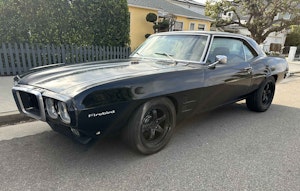
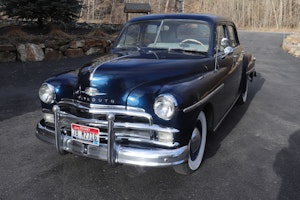
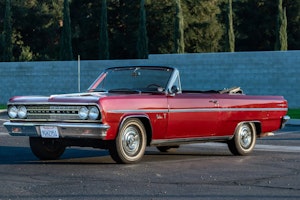
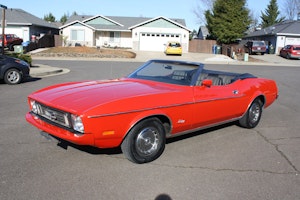

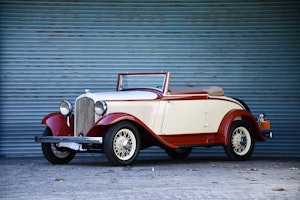
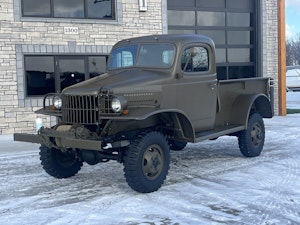
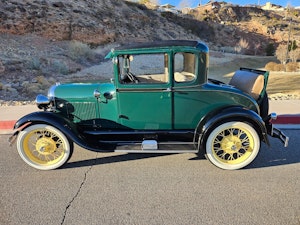
20180326141827)
20180326141707)
20180326141849)


I’ve owned my 1966 Corvair for 53 years. I ran my 1961 Rampside for 15 years as my primary work truck. I correctly own six Corvairs, four of which are main vehicles. Even with the inherent flaws, the Corvair is one of the best designed cars of all time. It’s modular design makes it very easy to maintain and swap out an old powertrain for a newly rebuilt one. All the models have essentially interchangeable powertrain, whith only minor differences between the years and cars vs. trucks. I only wish Chevrolet did make it a Division and developed it further. It could have been an awesome car, akin to the Corvette. Even so, after all these years, the Corvair still lives… And better than ever.
I owned a ’61 Monza that I traded for a ’65 Corsa convertible. Both cars had extraordinary handling characteristics. As a lead footed college student, I put both cars through their paces on winding Colorado mountain passes and straightaways, and never feared the ’61’s rear wheels would fold under. Both cars were extremely fast, especially the Corsa, with four one barrel carbs that could go over 100mph with little effort, and it could keep up with a friend’s Corvette in the curves. I often wonder, if the writers and pundits that disparage the Corvair, partly due to Nader’s assessment, ever even drove a Corvair, other than around the block, if at all. I wish I still had the Corsa, which I traded for a ’68 AMX 390, which I still have.
Dear Arthur: A friend of mine, the late J. Richard Copeland of Princeton, WV, had a collection of Corvairs, one from every model year and one representing every model of the car (4-door sedan, coupe, convertible, station wagon, pickup, passenger van, and work van). These cars were all kept in first-class shape and were stored inside a heated garage. Dick persuaded me to purchase the ’63 Monza Coupe in 1996. I still have it but it has sat outside for years and hasn’t been run at all. One reason I didn’t run it was because it would stall on me and you would flood it and it wouldn’t restart. It has the 2 carburators. I need another car for daily driving. I don’t have any garage where I can work on this car. Would like to learn. I run a business full time. What should I do?
I don’t want to be a car collector.
I’m thinking of trading my 1948 chev fleet master restoration car and $3000 for a 1962 corvair restoration car ❓after reading the unsafeties, not sure⁉️
I owned a 1962 Corvair Monza convertable.I put overload shocks and 750 by 13 tires on the rear end and that made very stable control possible and predicable. It was capable of drifting safely. Later I put the Corsa 140 horsepower engine with four one barrel carburaters on it.I did 137 miles an hour with it. A fun car.
You did read the article where it said the NHTSA tested the Corvair…the ONLY car to have been tested by the feds…and came away saying the Corvair was as safe as any car made back in the day…right? IF you watched the notorious Ford video testing the Falcon alongside the Corvair it was discovered the drivers of the Corvair made a move with the steering wheel causing the Corvair to flip. Ralph Nader’s book, Unsafe at Any Speed, was condemnation of the entire automotive industry and the Corvair’s chapter was a small one. Much of what Nader claimed was false. It’s worth noting that in later years Nader confessed to picking on GM because it was the largest and he was trying to make a name for himself as a consumer advocate. The Corvair was an easy target. Fianlly GM recommended the front tires be inflated 10-12 pounds less than the rears to compensate for the oversteer resulting from the engine in the rear.
I drove a Corvair with a 4 speed when I was 17 and marveled at how well it drove and handled. Looking back at that age I sometimes wonder if enthusiasm got in the way of critical thinking. However, the fun I had stuck with me for decades. 10 years ago, I ran across a 1963 convertible that could be had for cheap. Fairly solid with some minor rust issues. As with all my collector cars I rewired, fixed any problem with rust, rebuilt the motor, transmission and rear end. When finished I took it on a vacation down the Blue Ridge Parkway, and some other sightseeing as well. The little car performed flawlessly at all speeds, road conditions, and weather. It’s earned its place in my garage alongsside the two muscle cars I own and sits right beside the ’37 Chevy street rod.
I too have a 63 convertible. Fun,reliable cheap to buy convertible. Stop telling our secret. Lol.
Hi, read where you put 7;50 x 13 tires on your Corvair. Did you think about going up to a 14 inch and sticking with the four bolt pattern?